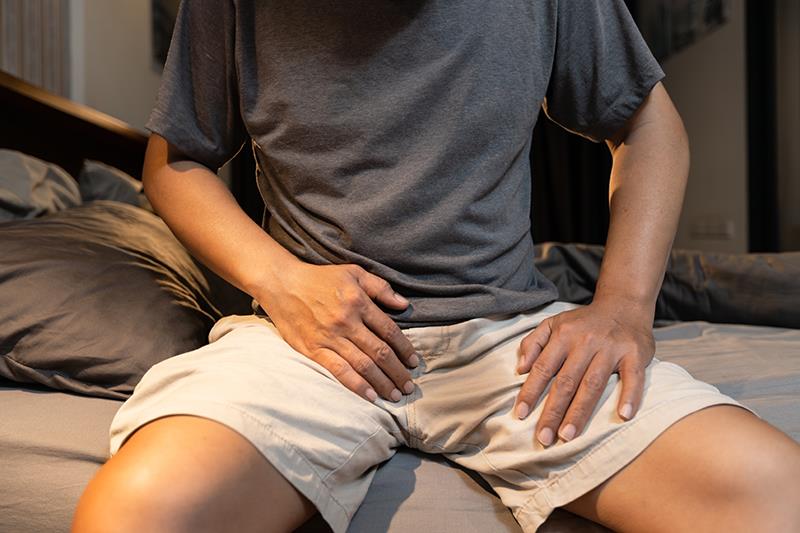Vibegron relieves OAB symptoms in men treated for BPH





Treatment with vibegron significantly improves overactive bladder (OAB) symptoms in men who are being treated for benign prostatic hyperplasia (BPH), including daily micturitions and urgency episodes, results from the phase III COURAGE trial have shown. It is well tolerated and has an acceptable safety profile, with adverse event (AE) rates similar to placebo.
In addition, clinically meaningful improvements have also been observed in nocturia episodes, urge urinary incontinence (UUI) episodes, International Prostate Symptom Score (IPSS) storage scores, and volume voided per micturition.
“Significant improvements in primary efficacy parameters were observed by week 2 and maintained through week 24,” the investigators said.
COURAGE randomized men aged ≥45 years with OAB symptoms and BPH, treated with α-blocker with/without 5α-reductase inhibitors to receive either vibegron or placebo for 24 weeks. Of these, 965 (87.3 percent) completed the trial.
The primary endpoints were changes in mean daily micturitions and urgency episodes at week 12 from baseline. Secondary endpoints included changes in mean nightly nocturia and daily urge urinary incontinence episodes, IPPS storage score, and volume voided per micturition at week 12 from baseline. Safety was assessed through AEs.
Vibegron resulted in significant reductions in daily micturitions (least square mean difference [LSMD], ‒0.74, 95 percent confidence interval [CI], ‒1.02 to ‒0.46; p<0.0001) and urgency episodes (LSMD, ‒0.95, 95 percent CI, ‒1.37 to ‒0.54; p<0.0001) at week 12. [J Urol 2024;212:256-266]
Similarly, patients on vibegron vs placebo showed significant improvements at week 12 in nocturia episodes (LSMD, ‒0.22, 95 percent CI, ‒0.36 to ‒0.09; p=0.002), urge urinary incontinence episodes (LSMD, ‒0.80, 95 percent CI, ‒1.33 to ‒0.27; p=0.003), IPSS storage scores (LSMD, ‒.09, 95 percent CI, ‒1.2 to ‒0.6; p<0.0001), and volume voided (LSMD, 15.07 mL, 95 percent CI, 9.13‒21.02; p<.0001).
AE rates did not significantly differ between the vibegron and placebo groups (45.0 percent vs 39.0 percent). The most common AEs reported were hypertension (9.0 percent vs 8.3 percent), COVID-19 (4.0 percent vs 3.1 percent), UTI (2.5 percent vs 2.2 percent), and haematuria (2.0 percent vs 2.5 percent).
EMPOWUR
“Improvements in micturition frequency, urgency episodes, and UUI were broadly consistent with results from the EMPOWUR trial, which assessed efficacy and safety of vibegron monotherapy in patients with OAB,” the investigators said. [J Urol 2020;204:316-324]
“This suggests that vibegron is similarly efficacious at reducing OAB symptoms in patients with and without coexisting BPH and may work additively with pharmacologic BPH treatment consisting of α-blockers with or without 5α-reductase inhibitors,” they added.
Results for the safety of vibegron treatment in COURAGE was also consistent with those from EMPOWUR, with no new safety signals found in BPH patients. Participants treated with vibegron had similar rates of UTI and urinary retention to those treated with placebo. [J Urol 2020;204:316-324]
“Although most participants in the COURAGE trial had pre-existing hypertension, treatment-emergent AEs of hypertension occurred at similar rates with vibegron and placebo, consistent with results from EMPOWUR and an ambulatory blood pressure monitoring study,” the investigators said. [Blood Press Monit 2022;27:128-134]
COURAGE had some limitations. First, participants were recruited based on BPH diagnosis and IPSS score, without formal assessment of bladder outlet obstruction or detrusor dysfunction. Second, participants received treatment for BPH, precluding assessment of vibegron in men with BPH who did not receive pharmacologic treatment.